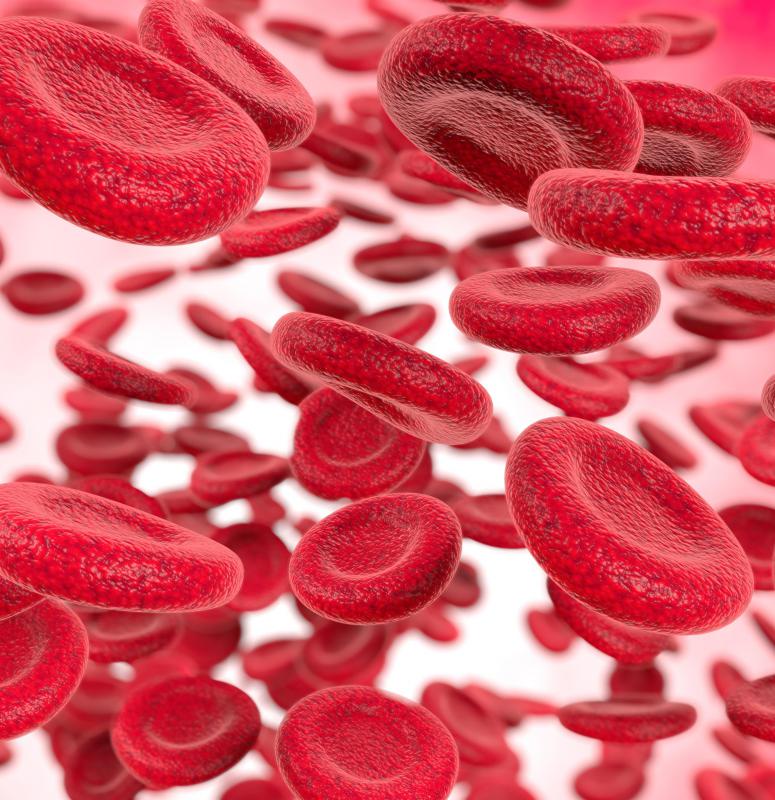At TheHealthBoard, we're committed to delivering accurate, trustworthy information. Our expert-authored content is rigorously fact-checked and sourced from credible authorities. Discover how we uphold the highest standards in providing you with reliable knowledge.
What is Hyperemia?
Hyperemia is a condition in which blood congests in a particular area of the body. It can be either active or reactive.
Active hyperemia takes place during muscle contraction, which has earned it additional names, such a functional hyperemia and exercise hyperemia. Other causes include an increase in mental, cardiac, or gastrointestinal activity. With active hyperemia, blood collects in a particular organ as the result of increased blood flow caused by the arteriolar smooth muscle dilating, which is often due to an increase in the metabolism. When the metabolic activity of the organ is increased, it develops a decreased ability to vasodilate and to perform vascular recruitment. This is particularly true if a skeletal muscle is affected.

Active hyperemia becomes evident within seconds of increasing tissue metabolism, which also increases blood flow. This increased blood flow returns to normal when the metabolism is restored to normal. The severity of the condition is determined by the how much the metabolic activity is increased.
With reactive hyperemia, also referred to as passive hyperemia, blood collects in an organ of the body in response to a blockage in the veins that are supposed to move the blood out. This usually takes place after a person experiences a period of ischemia, such as arterial occlusion. This leads to a shortage of oxygen, as well as an increase in the amount of metabolic waste that builds up in the organ.

Reactive hyperemia can occur after a tourniquet is applied to a person’s limb and then removed. It can also occur when a person’s arterial vessels are clamped, such as during surgery, and then released. If a person undergoes coronary occlusions, such as those experienced with a coronary vasospasm, reactive hyperemia may result. Experiencing coronary occlusion for only a few brief seconds places high metabolic demands on the contracting myocardium, which results in pronounced blood congestion. The longer a person experiences coronary occlusion, the more severe the condition will be and the longer it will last.
AS FEATURED ON:
AS FEATURED ON:












Discussion Comments
@ anon66609: I suggest you go see a podiatrist too, so he can evaluate your condition which might be an accessory sesamoid bone which is actually a little bone formed into a foot tendon or and exaggerated osseous formation in an area of friction like a kidner-navicular medial to the foot.
In this case, there could be formation of a bursa that causes inflammation and then pain. The more permanent treatment of this condition would be a surgical excision which a podiatrist surgeon could do. If you don't want to cover the fees related to a surgery, then you could considered a cortisone injection and see if the pain and inflammation come back. If it does, then orthosis with a proper isolation of the bony prominence could be considered and might help your condition. Maybe your situation is different to any of these I just listed, but in my opinion you should go see your foot doctor.
@ Kitty46: Hyperemia surrounding your second right, first and second left MTP joint means that there is actually an increased blood flow in this region which may lead to bone demineralization and/or be secondary to any infection/inflammatory processes in this region.
The arthropathy of your first and second MTP joint of both feet means that there are changes in the articular structures of your forefoot articulations that could be secondary to inflammatory arthritis such as Rheumatoid arthritis, psoriatic arthritis, and others.
The plantar fasciitis means that your plantar aponeurosis, which is kind of a ligament which maintains the plantar arch elevated, is weak and micro traumatized generally under the heel (at the insertion on the medial tubercle of the calcaneus), which is often related to a flat foot deformity (hyperpronation of the subtalar joint and/or midtarsal joint) and which lead to an inflammatory response and pain under both heels.
If this is really what is happening to you and is recurrent, I suggest you go see a podiatrist so he can prescribe orthoses to restore a proper lower limb biomechanics or do a cortisone injection to lower the inflammatory response and help you to get rid of this pain. Hope this sounds clearer to you right know.
I was diagnosed with accessory bone bilateral in both feet when I was in the USMC boot camp.
I was immediately discharged with erroneous enlistment. They told me they could not perform any surgery because I was not officially a United States Marine.
Anyway, that was 15 years ago. I have always dealt with the pain. It is increasing with intensity now and I would like to know what I can do at home to eliminate the pain. I do not have health insurance and I am in the low income bracket. Can anyone suggest or guide me in the right direction to eliminate this problem? Or shall I carry this burden to the grave?
Were you being worked up for arthritis? Sounds like you have some low grade inflammation in your foot joints, which can be a sign of rheumatoid arthritis but can also be due to many other things like injuries etc.
You should have your doctor explain what it all means, that is part of his/her job!
I recently had a bone scan done on my feet. It was found that I have moderate hyperemia in the region of the second right MTP joint, and to a mild degree, in the 1st and 2nd left MTP joints. Mild focus increased uptake also at the planter aspects of both calcanei. Also arthropathy in both feet involving the 1st and 2nd MTP joints. And, mild foci of bilateral plantar fasciitis. What does this all mean? I cannot understand my doctor.
Post your comments